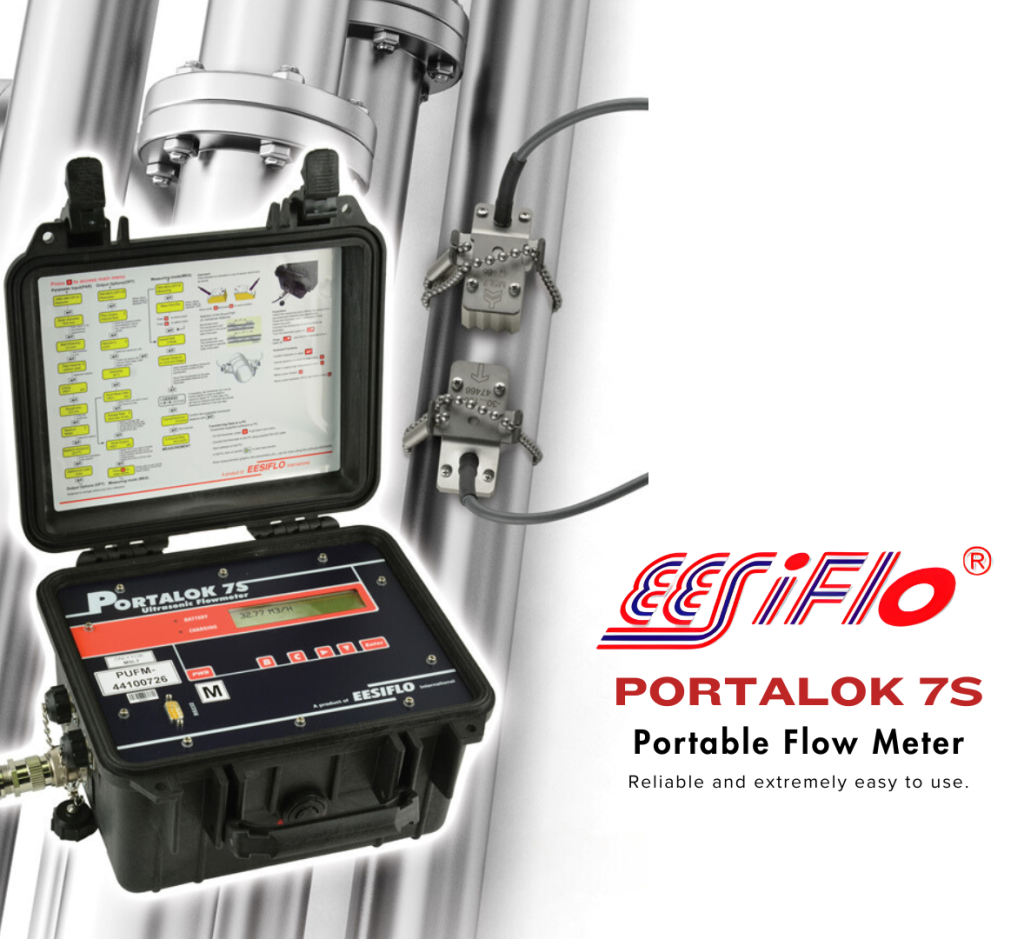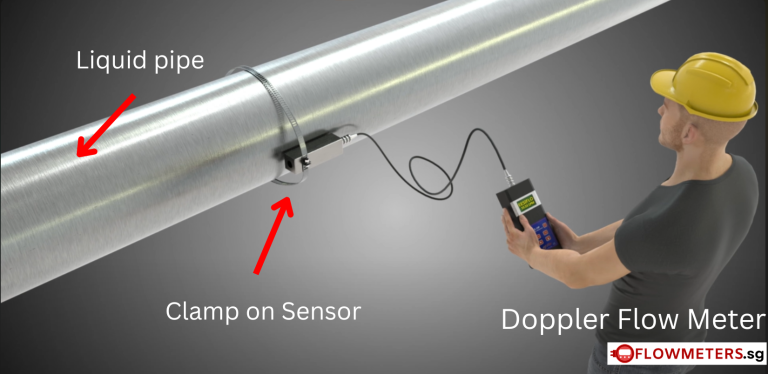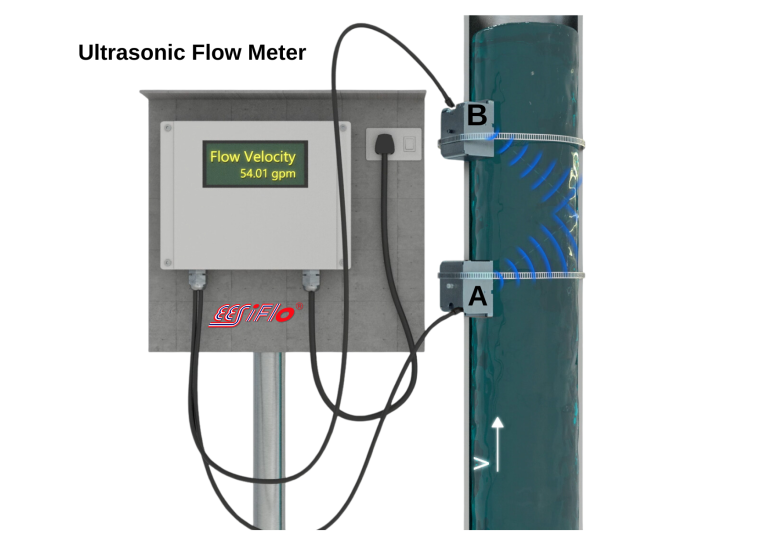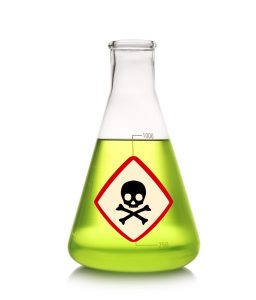PORTALOK 7S

One of the advantages of the Portalok 7S ultrasonic flow meter are its proven track record and its thousands of reliable measurements in almost every imaginable clamp on flow application. The flow meter is extremely popular in flow surveys because of its ability to conduct speedy measurements with minimum user knowledge.
What is an Ultrasonic Flow Meter?
An ultrasonic flow meter uses sound waves above human hearing levels to measure flow rates in liquids and gases. There are several ultrasonic flow measurement technologies available in the market which include transit time flowmeters and Doppler meters but the most popular technology by far is the transit time method.
How Ultrasonic Flow Meters work?
Principle of Operation
Doppler Flow Meters work well on liquids containing a minimum amount of air bubbles or solids. A flow transducer probe is positioned either inside the pipe or for convenience sake, externally i.e. on the outside wall of the pipe.

In the following video animation, it is possible to see how the ultrasonic waves are transmitted. In this instance, the Doppler Flow waves transmission is constant. The doppler flow probe sends and receives. The receives signal is measuring the doppler shift which is proportional to the flow velocity of the moving particles or air bubbles. Since the measurement is calculating the velocity of the moving objects, it is necessary to initially calibrate the unit for the liquid flow. The Doppler Flow Meter is a useful instrument in situations where it is impossible to measure flow rates with other technologies.
Video animation of Doppler Shift Flow Meters
Another way to measure the flow is by the Transit Time method (also called Time of Flight) This method does not need reflectors inside the pipe. Instead, it measures the time taken for a signal from one flow transducer to another. At zero flow or no flow, the Transit Time between sensor A and sensor B is the same.

The following video animation explains how this work in slow motion. When there is a positive flow in the pipe, the time for sensor B’s signal to reach sensor A will be slower according to the velocity. In a similar way, a human will take longer to swim upstream in a river as opposed to swimming downstream. These time differences (although very small) can be measured by the flow meter’s internal clock to calculate a delta T or time differential known as the Transit Time. See video animation for further explanation.
Transit Time Principle - EESIFLO Ultrasonic Flow Meter Animation
EESIFLO Manufactures advanced Transit Time Flow Meters Coupling Transit Time techniques with Cross-correlation to enable operators to measure the flow rate at all common velocities with improved accuracy and repeatability. We use the Transit Time cross-correlation method combined with modern day electronics and advanced signal processing.
Advantages of Ultrasonic Flow Meters
There are so many advantages in using Ultrasonic Flow Meters which are too many to name. Their popularity has grown but most installations are normally measuring water flow. It is important to know that the same technology can also measure chemical flow in a pipe. Where toxic chemicals are present, it is much safer to use a high-quality clamp on meter if an urgent need arises where the operator would like to know the flow rate without stopping the pumps, closing valves and cutting into a pipe.

SG Flowmeters Pte Ltd are experienced with many types of ultrasonic flow meter technologies to suit various applications in all industries from small pipe flow to large pipes with water-based fluids and oil-based chemicals. Call us if you have a requirement which needs some thought and discussion. We hope to provide the best and most convenient technical flow solutions for all our clients.













